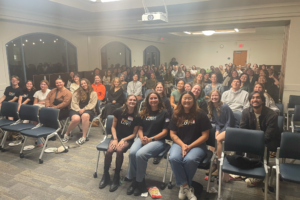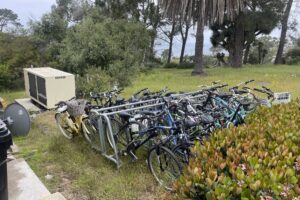Shortly after 8:00 a.m. on Saturday Jan. 13, tens of thousands of Hawaii residents received the following alert on their cell phones: “BALLISTIC MISSILE THREAT INBOUND TO HAWAII. SEEK IMMEDIATE SHELTER. THIS IS NOT A DRILL.”
38 minutes passed before the Hawaii Emergency Management Agency notified residents that this alert was a false alarm.
Between the time of the initial alert and the follow-up notice, utter fear struck the lives of residents as they ran for any shelter they could find. Many believed that this would be their last few moments, calling and texting family and friends to say a final “goodbye” and “I love you.”
For Point Loma Nazarene University junior Arielle Taramasco, the incident hit all too close to home.
Taramasco is from Oahu, where her brother, sister, and parents currently reside. She was in San Diego when the incident happened, and recalls the morning the alert was sent out.
“I was woken up by a call from my brother, who was in hysterics. He was at the beach getting ready for a paddling race…He’s only 17,” Taramasco said. “My parents were out in the water surfing, so no one could get a hold of them at all. He ended up having to take my (14 year-old) sister and pile several other beach goers in the car and drive across the street to the shopping mall. Meanwhile, I couldn’t get in touch with any of my family members because most of them had left their phones and gone straight to the nearest home or loved one to give what they believed would be their last goodbyes.”
Taramasco said she saw videos of parents putting their children in manholes and people abandoning their cars on the freeway. Since Hawaii is an island, there is no real escape from imminent danger, especially in the case of a ballistic missile.
“Not being able to…call my family, and truly believ[ing] in that moment that I wouldn’t have a home or family to come back to, was heart-wrenching and utterly terrifying…Not to mention my only source of information was twitter and Facebook, which are definitely not my go-to news sources,” Taramasco said.
Although it was a false alarm, this alert caused people all over Hawaii to panic and seek shelter while trying to contact loved ones. Taramasco was glad that her brother was able to get ahold of her, because many residents had trouble making calls due to heavily trafficked telephone lines.
Thousands of miles from her family and home, Taramasco felt helpless that morning. She feared for her family’s lives, and thought about what life would be like if a missile really did destroy her home.
Relief came over Taramasco when she heard that the alert was a false alarm. But she also felt anger and confusion at what had happened. “By the time my parents came back my siblings were pretty traumatized,” she said.
Taramasco’s story is only one of millions that shaped that Saturday morning.
Although the panic is over and the incident has subsided, Taramsco is still processing everything that happened.
“Being so close to losing everything really puts life into perspective. It’s not something I really got closure from. I have to think about where I’m going to live in the future and how close to keep my loved ones to me, so in a lot of ways I’m still dealing with it.”









Add Comment